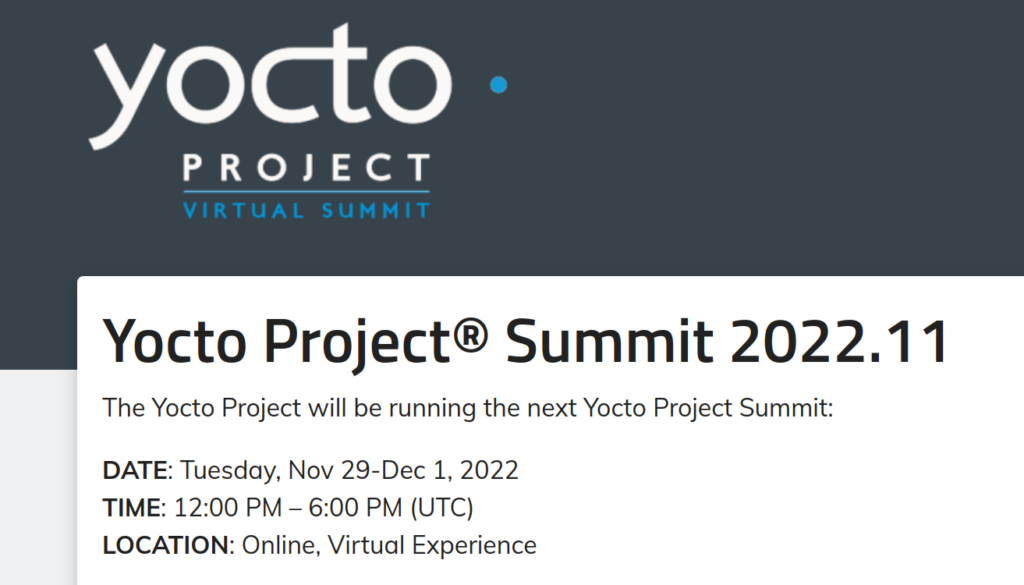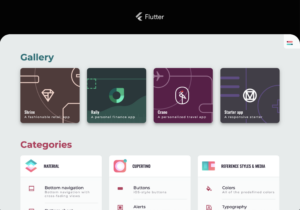At Bootlin we help many of our customers using Yocto/OpenEmbedded to build the Linux software stack running on their end products. While doing that we have seen all sorts of problems caused by all sorts of complicated code in their build system setup. So we wondered what we could do to improve the overall situation. Continue reading “Keep your Yocto layer simple! Introducing meta-kiss, a working reference Yocto/OE setup”
Tag: yocto
Yocto Project Summit 2023.11: 2 Bootlin talks
The Yocto Project regularly organizes an-online conference called the Yocto Project Summit. The next edition, Yocto Project Summit 2023.11 will take place on November 28-30, from 12:00 to 18:00 UTC, and at just $40, attending is really affordable.

Bootlin is not only a big user of the Yocto Project, but also a significant contributor to the project, so we’re happy to announce that our two talk proposals for the Yocto Project Summit 2023.11 have been accepted. Bootlin engineers will therefore deliver the following talks:
- Keep your layer simple — and here’s how, by Luca Ceresoli, on November 29, at 14:20 UTC.
- How to Contribute to OpenEmbedded, Yocto, and Many Other Open Source Projects, by Michael Opdenacker, on November 30 at 12:45 UTC.
If you are a user of the Yocto Project, or intend to become one, we can only recommend you to attend this event. And of course, if you need training on Yocto Project, or engineering/support services, do not hesitate to contact us!
Yocto Project 4.2 released – Bootlin contributions inside
The Yocto Project has published its new release: 4.2, also known as “Mickledore”.
It features improved Rust support, BitBake engine improvements, support for Linux 6.1 (the latest Long Term Support kernel), new QEMU features, testing improvements and of course many other new features and package updates. See the release notes for all details.
Bootlin has actively contributed to this release, as seen in the number of commits, in particular through our work maintaining the documentation, improving regression detection and on Autobuilder SWAT.
Continue reading “Yocto Project 4.2 released – Bootlin contributions inside”
Yocto: sharing the sstate cache and download directories
When developing projects based on Yocto Project / OpenEmbedded, a quite common practice is to have multiple build environments in different directories: one per product, or one for each development branch, or for other scenarios. Each build environment could have different layers, a different configuration, or just using a different version of the source code.
With default settings, different build directories result in duplicated storage for the downloaded source code and build artifacts, as well as duplicated time for downloading the sources and to build everything. This can be troublesome for large projects.
Fortunately, the bitbake build engine can share both the downloaded source code and the intermediate build results across multiple build directories, saving build time and disk space.
Continue reading “Yocto: sharing the sstate cache and download directories”
Continuous integration in Yocto: improving the regressions detection
 The Yocto Project is an open source umbrella project which gathers all needed tools to build full Linux distributions for a wide variety of devices. As the interest for Yocto grew since its first steps, its size and number of use cases increased consequentially. This growth quickly introduced the need of automated testing so that developers can keep introducing new features to the project while making sure not to break any existing part. Bootlin engineer Alexis Lothoré has recently been involved in the Continuous Integration infrastructure of the Yocto Project and has brought improvements to allow Yocto maintainers to detect regressions earlier.
The Yocto Project is an open source umbrella project which gathers all needed tools to build full Linux distributions for a wide variety of devices. As the interest for Yocto grew since its first steps, its size and number of use cases increased consequentially. This growth quickly introduced the need of automated testing so that developers can keep introducing new features to the project while making sure not to break any existing part. Bootlin engineer Alexis Lothoré has recently been involved in the Continuous Integration infrastructure of the Yocto Project and has brought improvements to allow Yocto maintainers to detect regressions earlier.
Continue reading “Continuous integration in Yocto: improving the regressions detection”
Embedded Linux and Yocto training courses now available in Italian
 Buongiorno!
Buongiorno!
For many years, we have been offering our training courses in both English and French. We are happy to announce that we are now expanding our offering towards our Italian customers: we are now able to deliver our very popular Embedded Linux system development and Yocto Project and OpenEmbedded development training courses in Italian. Those courses are delivered by a native Italian speaker, Bootlin engineer Luca Ceresoli. Luca has 20 years of experience working with embedded systems, including 15 years on embedded Linux.
Thanks to this offering, our Italian customers can enjoy a training course delivered in their native language, which obviously facilitates communication, understanding and interaction. We can offer our Embedded Linux course and Yocto course in Italian through either private on-site sessions or private on-line sessions. Contact us at training@bootlin.com for details and pricing!
Ti aspettiamo!
Updated Yocto support for SiFive RISC-V platforms
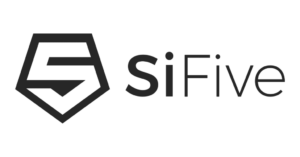 A few months ago, we started supporting SiFive in their effort to maintain and improve the Yocto support for their RISC-V processors and platforms. The Yocto support for SiFive platforms is divided into two layers:
A few months ago, we started supporting SiFive in their effort to maintain and improve the Yocto support for their RISC-V processors and platforms. The Yocto support for SiFive platforms is divided into two layers:
- A BSP layer: meta-sifive
- A demo/SDK layer: freedom-u-sdk
These layers allow to build ready-to-use Yocto images for the Qemu RISC-V 64-bit emulation, the HiFive Unleashed and HiFive Unmatched development boards.
As part of our work on the Yocto support for SiFive platofrms, we have already published three new releases of these layers: 2022.06, 2022.08 and 2022.10. In this blog post, we review the main highlights of those releases.
Continue reading “Updated Yocto support for SiFive RISC-V platforms”
Upcoming Yocto Project Summit 2022.11 – One talk from Bootlin
As every six months for the last two years, a new virtual edition of the Yocto Project Summit is coming, and its schedule has been announced.
This summit will be over 3 days:
- Tuesday, November 29
Two tracks in parallel, a beginner track and a “hands-on” track for people already familiar with the concepts. - Wednesday, November 30
Only one track, with intermediate level talks on all kinds of topics. - Thursday, December 1
Only one track, starting with “product showcase” talks and going on with intermediate level talks on various topics too.
Last but not least, at the end of each day, you will get a chance to hangout with other contributors and users, and ask all the questions that you may have.
Bootlin is proud to contribute one talk to this summit: Bitbaking SPDX SBoM which we will prepare and present. This talk will cover one of the topics we explored to document features of the Yocto Project which had no documentation yet. SPDX and SBoM are related to software supply chain security, vulnerability management and license compliance. These are hot topics these days, and there will be another presentation about SBoMs (SBoMs and Supply Chain with the Yocto Project by Joshua Watt), and two about security (Detecting and fixing CVE security issues in yocto based embedded Linux distribution by Mikko Rapeli, and Maintenance and Security of a Yocto Project-based Distribution: A Year of Experiences by Marta Rybczynska).
Bootlin is indeed involved in the Yocto Project by maintaining its documentation (see the active contributors through the git repository), and also a participant to the Yocto SWAT team, keeping track of all the issues encountered by the autobuilder machines and runs.
Though the Yocto Project and OpenEmbedded are Open Source projects, registration for this conference is not free but just costs 40 USD, to cover infrastructure and staffing costs, the event being hosted by the Linux Foundation.
Yocto training course updated to Kirkstone release
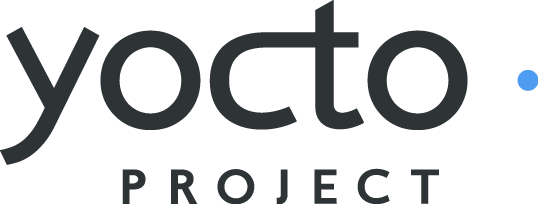 Back in May 2022, the Yocto Project published the Kirkstone release, the latest Long Term Support version of the popular embedded Linux build system. See the release notes of this 4.0 release.
Back in May 2022, the Yocto Project published the Kirkstone release, the latest Long Term Support version of the popular embedded Linux build system. See the release notes of this 4.0 release.
For many years, Bootlin has helped plenty of engineers around the world get started with the Yocto Project and OpenEmbedded thanks to our Yocto Project and OpenEmbedded development training course, whose training materials are freely accessible, to everyone.
We are happy to announce that we have just published the update of these materials to cover this new Kirstone release. Our practical lab instructions, available for both the STM32MP1 Discovery Kit and the BeagleBoneBlack, have been correspondingly updated:
- Slides
- Practical labs on STM32MP1 Discovery Kit
- Practical labs on BeagleBoneBlack
- Data needed for the practical labs
- Git repository of training materials source code
This update was done by Bootlin engineer Luca Ceresoli, who is teaching this updated version of our course this week. The next public session, open to individual registration, will take place on September 26-30, and will be taught by Maxime Chevallier. If you are interested, you can register directly online. We also offer this course in private sessions, organized on demand for your team, either on-line or on-site, you can contact us for more details.
Using Flutter on NVidia Jetson to build graphical applications
Introduction
 Flutter is an open source UI framework, released in 2017 by Google, that allows the creation of multi-platform applications, without having to worry about constraints related to supported platforms.
Flutter is an open source UI framework, released in 2017 by Google, that allows the creation of multi-platform applications, without having to worry about constraints related to supported platforms.
Flutter applications are written in a programming language called Dart, then compiled and run as a native applications, to be efficiently executed on Linux, Android, iOS or Windows platforms, but also as Web applications.
On Linux platforms, Flutter can be used on top of several graphic back-ends:
- DRM
- Wayland
- X11
Flutter is composed of four main parts:
- the embedder (C++, Java…): the glue for specific platforms that provides surface rendering, vsync.
- the engine (C/C++): the graphic engine based on Skia, that provides asset resolution, graphics shell, Dart VM…
- the framework (Dart): to create UI by using widgets, animation…
- the applications (Dart)
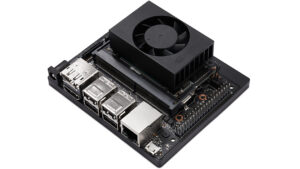 In this article, we show how to build a custom Linux distribution that includes a Flutter Embedder that uses the DRM/EGLStream backend, in order to run the Flutter Gallery application on the NVIDIA Tegra Xavier NX platform.
In this article, we show how to build a custom Linux distribution that includes a Flutter Embedder that uses the DRM/EGLStream backend, in order to run the Flutter Gallery application on the NVIDIA Tegra Xavier NX platform.
In addition, we will also extend a Yocto SDK to embed the Flutter toolchain, to be able to build Flutter applications directly with the SDK.
Configure Yocto and build an image
To build our Flutter-enabled Linux distribution, we have chosen to use OpenEmbedded, driven through the Kas utility. Kas is a tool developed by Siemens to facilitate the setup of projects based on Bitbake, such as OpenEmbedded or Yocto.
Kas relies on a YAML file that indicates the information required to:
- clone bitbake and required layers
- configure the build environment
- launch bitbake process
Below is the Kas YAML file that we created for this example:
header:
version: 11
build_system: oe
machine: jetson-xavier-nx-devkit
distro: nodistro
target:
- core-image-minimal
repos:
bitbake:
url: https://git.openembedded.org/bitbake
refspec: "2.0"
layers:
.: excluded
openembedded-core:
url: https://git.openembedded.org/openembedded-core
refspec: kirkstone
layers:
meta:
meta-clang:
url: https://github.com/kraj/meta-clang.git
refspec: kirkstone
layers:
.:
meta-flutter:
url: https://github.com/meta-flutter/meta-flutter.git
refspec: kirkstone
layers:
.:
meta-tegra:
url: https://github.com/OE4T/meta-tegra.git
refspec: kirkstone
layers:
.:
local_conf_header:
standard: |
FLUTTER_RUNTIME = "release"
FLUTTER_SDK_TAG = "3.0.1"
DISTRO_FEATURES:append = " opengl wayland"
REQUIRED_DISTRO_FEATURES:append = " opengl wayland"
IMAGE_INSTALL:append = " flutter-drm-eglstream-backend flutter-gallery-release tegra-udrm-probeconf"
TOOLCHAIN_HOST_TASK:append = " nativesdk-flutter-sdk"
TOOLCHAIN_TARGET_TASK:append = " gtk+3-dev"
CLANGSDK = "1"
INIT_MANAGER ?= "systemd"
Several OpenEmbedded layers are used:
- Obviously the openembedded-core layer, the base
- The meta-flutter layer, which contains all the Flutter related recipes
- The meta-tegra layer, which is our BSP layer containing all the bootloader/kernel and machine-specific recipes for the Nvidia Jetson Xavier NX platform
- The meta-clang layer, which is needed by the meta-flutter layer, as Flutter is built using the Clang compiler
As we chose to use a DRM/EGLStream backend of Flutter we extend the DISTRO_FEATURES to enable the support of OpenGL and Wayland:
DISTRO_FEATURES:append = " opengl wayland"
In addition, we extend the list of packages that will be installed in the image with the ones that provide the Flutter embedder and the Gallery application:
IMAGE_INSTALL:append = " flutter-drm-eglstream-backend flutter-gallery-release"
Moreover, as we want to use the release 2.10.5 of Flutter, and without debug support:
FLUTTER_RUNTIME = "release" FLUTTER_SDK_TAG = "3.0.1"
Finally, we also install the package that provides a configuration to set the correct modeset when the Tegra direct rendering module is probed.
IMAGE_INSTALL:append = " tegra-udrm-probeconf"
Using this YAML file, we can instruct Kas to launch the build:
kas build kas-flutter-example.yml
Storage flash process
Images and Nvidia tools to flash Jetson platforms are packaged into a tarball built and deployed as a target image into the folder build/tmp-glibc/deploy/images.
The SD card image for the Jetson Xavier NX can be flashed in two different ways:
- from the target board,
- from the host.
Here, we explain how to flash it from the target board.
Note: Each Jetson model has its own particular storage layout.
First, we need to extract the tegraflash archive:
mkdir tegraflash cd tegraflash tar -xvzf ../build/tmp-glibc/deploy/images/jetson-xavier-nx-devkit/core-image-minimal-jetson-xavier-nx-devkit.tegraflash.tar.gz
Moreover, to be able to flash the Jetson Xavier NX, it is required to switch it in recovery mode. For that it is necessary to connect a jumper between the 3rd and 4th pins from the right hand side of the “button header” underneath the back of the module (FRC and GND; see the labeling on the underside of the carrier board).

With this done, the module will power up in recovery mode automatically and will be visible from the host PC as an additional USB device:
lsusb |egrep 0955 Bus 003 Device 047: ID 0955:7e19 NVIDIA Corp.
Overall, here are the steps to follow to flash the SD card and the SPI Nand:
- Start with your Jetson powered off.
- Enable the recovery mode, as indicated above.
- Connect the USB cable from your Jetson to your development host.
- Insert an SD card into the slot on the module.
- Power on the Jetson and put it into recovery mode.
- Execute
./doflash.shfrom the extracted tegraflash archive.
Finally, the target will boot.
Launch the Flutter application
Now, it is possible to start the Flutter Gallery application which is part of the core-image-minimal image, together with the Flutter stack, with the following command:
flutter-drm-eglstream-backend -b /usr/share/gallery
Customize a Yocto SDK
The OpenEmbedded build system can also be used to generate an application development SDK, that is a self-extracting tarball containing a cross-development toolchain, libraries and headers. This allows application developers to build, deploy and debug applications without having to do the OpenEmbedded build themselves.
It is possible to enrich the SDK’s sysroots with additional packages, through the variables TOOLCHAIN_HOST_TASK and TOOLCHAIN_TARGET_TASK.
That allows for example to extend the SDK with for example profiling tools, debug tools, symbols to be able to debug offline.
So, we used these variables to append the Flutter SDK and required dependencies to the Yocto SDK, to be able to cross-build Flutter applications with it.
TOOLCHAIN_HOST_TASK:append = " nativesdk-flutter-sdk" TOOLCHAIN_TARGET_TASK:append = " gtk+3-dev"
To build the SDK with the same setup as the image previously built, we invoke Kas as follows:
kas shell kas-flutter-example.yml -c "bitbake -fc populate_sdk core-image-minimal"
Deploy the SDK
The SDKs built by OpenEmbedded are deployed in the folder build/tmp-glibc/deploy/sdk, so they can be extracted as follows to a folder:
build/tmp-glibc/deploy/sdk/oecore-x86_64-armv8a-toolchain-nodistro.0.sh -y -d ${destination}
To use the SDK, it is required to source the environment setup script that will set some cross-compile variables, like CC, LD, GDB, in the shell environment to develop or debug applications with SDK’s sysroots:
source <destination>/environment-setup-armv8a-oe-linux
Cross-build the Flutter gallery application
To illustrate how to use the SDK, let’s see how to build the Gallery Flutter application with the Yocto SDK. Before calling the flutter command, the SDK environment-setup script has been sourced and the following environment variables have been set:
FLUTTER_SDK: the path to the Flutter SDK into the Yocto SDK,ENGINE_SDK: where the Flutter engine shall be built,PATH: to extend the shell environment with Flutter tools provided by the SDK.
We can then retrieve the application source code:
git clone git@github.com:flutter/gallery.git cd gallery git checkout 9eb785cb997ff56c46e933c1c591f0a6f31454f6
Here, it is a workaround, that allows the flutter command line to correctly find the version of Flutter SDK:
export SDK_ROOT=/sysroots/x86_64-oesdk-linux/usr/share/flutter/sdk git config --global --add safe.directory $SDK_ROOT chmod a+rw $SDK_ROOT -R rm -rf ${SDK_ROOT}/bin/cache/pkg/sky_engine/
Without the workaround above, the following error is raised:
The current Flutter SDK version is 0.0.0-unknown. [...] Failed to find the latest git commit date: VersionCheckError: Command exited with code 128: git -c log.showSignature=false log -n 1 --pretty=format:%ad --date=iso Standard out: Standard error: error: object directory build/downloads/git2/github.com.flutter.flutter.git/objects does not exist; check .git/objects/info/alternates fatal: bad object HEAD Returning 1970-01-01 01:00:00.000 instead. [...]
Set the required environment variables and build the application for Linux:
export FLUTTER_SDK="${destination}/sysroots/x86_64-oesdk-linux/usr/share/flutter/sdk"
export PATH=${FLUTTER_SDK}/bin:$PATH
export ENGINE_SDK="./engine_sdk/sdk"
flutter config --enable-linux-desktop
flutter doctor -v
flutter build linux --release
flutter build bundle
This gives you the Flutter application, ready to run on the target!
Conclusion
In this blog post, we have shown that deploying Flutter on an OpenEmbedded distribution was a relatively easy process, and that the SDK can be extended to allow building Flutter applications.

